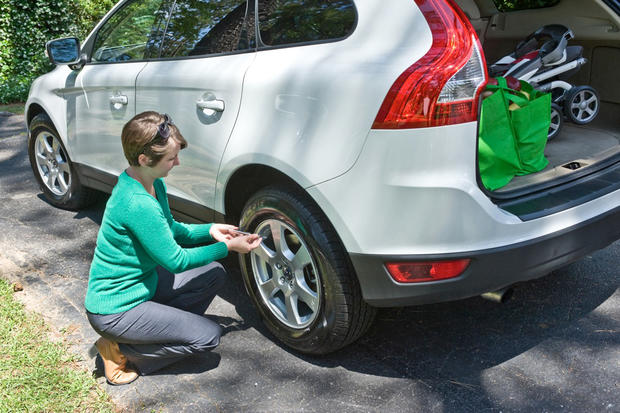Do-it-yourself safety for back-to-school driving
Safety on the road seems like a no-brainer, but considering how much parents drive -- especially when school rolls around -- now might be just the right time to check out your vehicle.
According to a recent study of moms, conducted by Cooper Tire in partnership with Cars.com and MotherProof.com, many women consider their grocery purchases as a way to benefit their kids, but don't mention their vehicle's upkeep.
Special section: Eye on Parenting
Special section: Back to School
Moms have a lot on their minds, so we understand the oversight. But what does your car actually need to be safe as you hit the road for the school year?
Pictures: Back-to-school car safety checklist
In addition to things such as regular servicing, your car's tires should be in good shape. But according to former IndyCar driver Johnny Unser, who's a dad and a representative for Cooper Tire, you can take the do-it-yourself approach here. He advises drivers to perform the monthly 10-minute maintenance check listed below:
1. Check tire tread. Tire tread depth should be more than 2/32 of an inch all around the tire. Drivers can check this by using a U.S. penny. Insert the edge of the coin into the tread with Lincoln going in headfirst. If the top of Lincoln's head is covered by tread, that means there is at least a minimum acceptable amount of tread; if the top of his head is visible at any location on the tire, the tire is worn out and it's time to replace it.
2. Examine the tires. Look for signs of uneven wear or damage such as cuts, cracks, splits, punctures and bulges. These conditions shorten the life of tires and, if not corrected, additional tire damage or air loss may occur.
3. Find your correct tire pressure. Drivers should follow the guidelines found in the vehicle owner's manual or tire placard (or sticker) attached to the vehicle door edge to determine the correct tire and air pressure for their vehicle. A common myth is that the tire pressure listed on the sidewall is the optimal pressure, while in reality it is the maximum pressure.
4. Check air pressure. Air pressure should be checked when the tires are cool, meaning they are not hot from driving even a mile. Check air pressure at least once per month, or before any long trips, because under-inflation creates excessive stress on the tire, while over-inflation can cause uneven wear, not to mention handling and braking issues.
